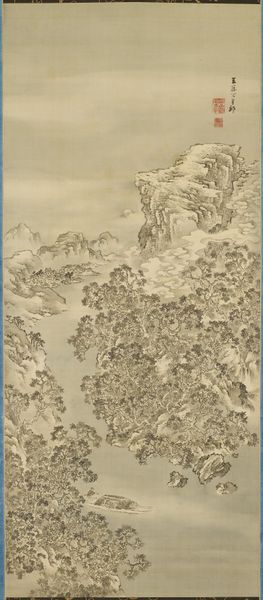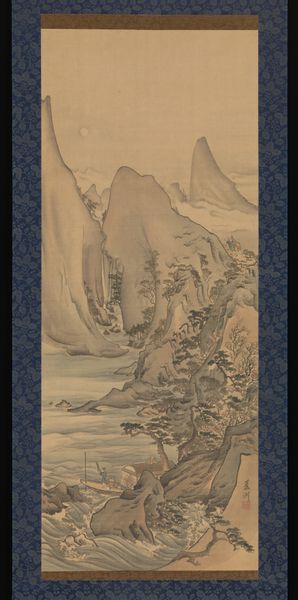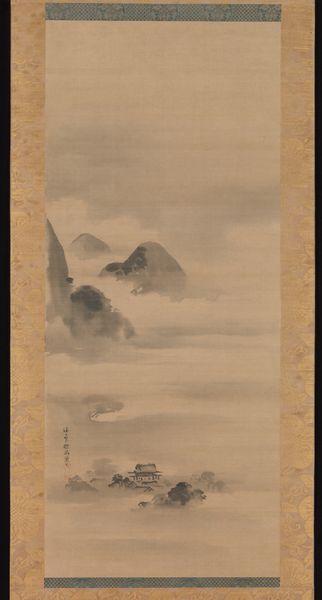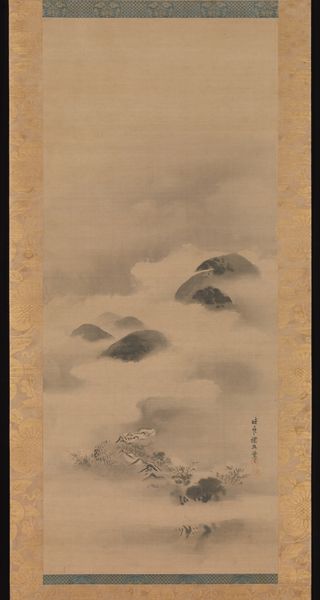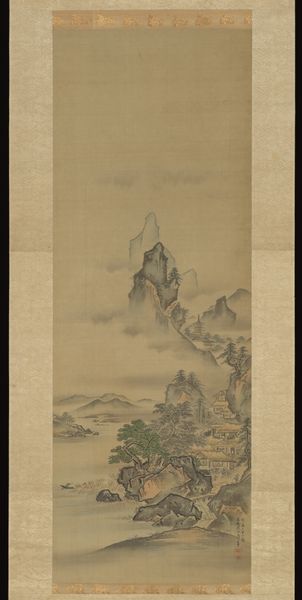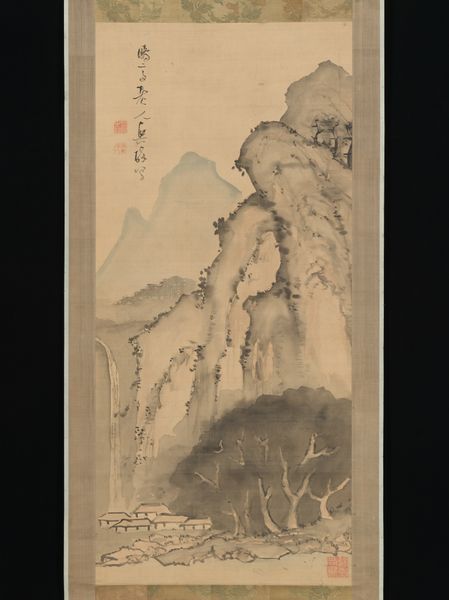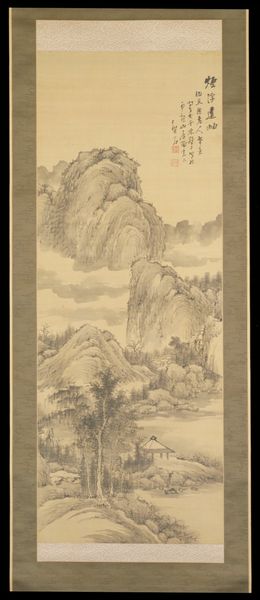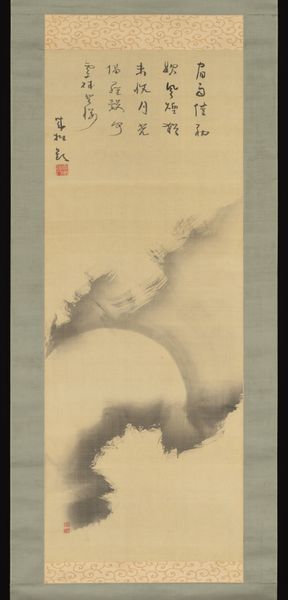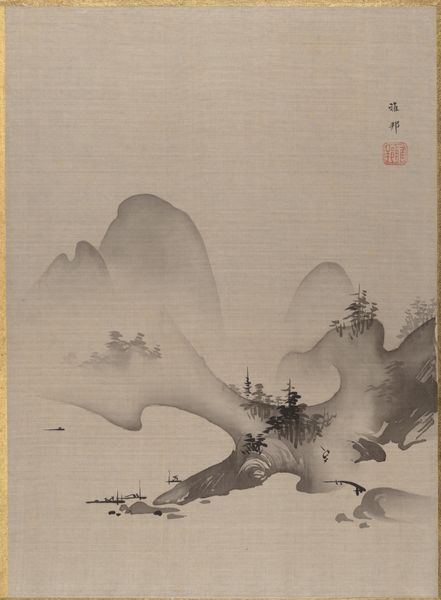
painting, paper, hanging-scroll, ink
#
ink painting
#
painting
#
asian-art
#
landscape
#
ukiyo-e
#
japan
#
figuration
#
paper
#
hanging-scroll
#
ink
Dimensions: 43 15/16 × 19 3/16 in. (111.6 × 48.74 cm) (image)77 1/4 × 24 in. (196.22 × 60.96 cm) (mount, without roller)
Copyright: Public Domain
Curator: What a charming piece! It's called "One Hundred Turtles", possibly dating back to 1860, attributed to Seki Nagatoshi. It's a hanging scroll, rendered in ink on paper, and belongs to the Minneapolis Institute of Art's collection. Editor: It's immediately peaceful, yet also teeming with this quiet, persistent energy. All those turtles make it feel alive, like a secret world unfolding right before us. Curator: It's fascinating how Nagatoshi-san uses the medium of ink to suggest so much texture. Notice the variations in tone and brushstroke. They not only define each turtle but also convey the movement of water, the solidity of the rocks. Ukiyo-e, the floating world, as captured through ink painting! Editor: And the paper itself feels so delicate! Imagine the skill involved in creating something so detailed and evocative on such a fragile material. I bet handling this scroll is akin to cradling a cloud. Curator: The theme of "one hundred" also carries significance. In Asian art, numbers are not merely quantitative but can represent abstract concepts. One hundred, often symbolizes longevity or abundance, very apt, considering that turtles stand for long life in East Asian traditions. It makes you wonder about the commissioning of this kind of artwork, the artisan class responsible for it, and what that level of abundance truly meant during its time. Editor: I'm drawn to the waterfall depicted. It disrupts the placid flow, a tiny reminder of life's little obstacles. It's as if Nagatoshi-san is subtly reminding us that even within tranquility, there's always change and movement, sometimes disruptive ones at that. It strikes me as a potent metaphor! Curator: Precisely. This piece isn’t just about artistic skill. It also speaks to larger cultural values around labor, consumerism and production, longevity, and harmony with nature, particularly how Japanese artisans expressed them with ink and paper at the time. It prompts one to reflect on how such values resonate even now, and their impact on current artistic endeavors! Editor: Absolutely. "One Hundred Turtles" isn't just a title, it's an invitation. We are, by merely observing it, plunged head-first into pondering time, resilience, and what it means to keep moving, no matter the current!
Comments
No comments
Be the first to comment and join the conversation on the ultimate creative platform.
